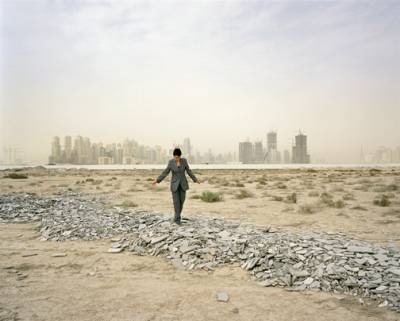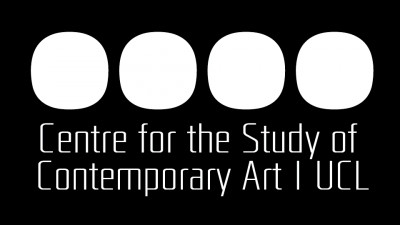Saturday 17 March 2012, 2-6pm
Tate Britain, Clore Auditorium

Carey Young, Body Techniques (after A Line in Ireland, Richard Long, 1974), 2007, ©Carey Young. Courtesy Paula Cooper Gallery, New York
This half-day symposium invites audience members to engage with international artists and academics to investigate current conditions of artistic production in relation to new forms of labour in the emerging global economy. Presenting various perspectives on immaterial labour and its relationship to contemporary art, speakers will address questions around the impact of immaterial production on new aesthetic forms and uses of art, how artists both embody and contest the precarious working conditions of immaterial labour, and art's potential to serve as immanent critique of capitalism.
Speakers: Claire Bishop, Tania Bruguera, Pascal Gielen, Stefano Harney, Stewart Martin, Hito Steyerl, & Carey Young.
Organisers: TJ Demos, Nora Razian, & Lauren Rotenberg
Preliminary Questions
- Given the theoretical elaborations of immaterial labour, and their critique, what possibilities of resistance remain for engaging 'immaterial labour' in relation to artistic practice? Can 'immaterial labour' conceptualize the radical and political potential of today's art forms? Can 'immaterial' artistic practice still be considered to operate as an immanent critique of capitalism, or rather merely an expression of its recent post-Fordist development? How might art offer strategies for harnessing what philosophers such as Michael Hardt and Toni Negri have termed new modes of biopower?
- How does immaterial labour relate to precarity? Can precarity - a product of new employment structures based on short-term contracts, flexibility, insecurity, and fluidity of labour - be mobilized as a strategy of resistance, as a resource, and not simply figure as a sign of existential, social and economic vulnerability?
- What forms of political solidarity remain for those in situations of precarious labour? How have recent social movements defined new approaches to the stakes, practice and experience of immaterial labour and precarity?
- Where do art institutions figure in relation to precarity? Can artists operate critically and autonomously within the institutional sphere? What potential remains for institutional critique today, and what of the options to create new institutions or operate outside them?
Select Bibliography
- Bishop, Claire: 'The Social Turn: Collaboration and Its Discontents', Artforum (February 2006): 179-185.
- Butler, Judith, 'For and Against Precarity,' Occupy Theory (2011)
- Gielen, Pascal, The Murmuring of the Artistic Multitude: global art, memory and post- Fordism, Amsterdam: Valiz, 2010.
- Graeber, David, "The Sadness of Post-Workerism: or 'Art And Immaterial Labour' Conference: A Sort of Review (Tate Britain, Saturday 19 January, 2008)," The Commoner (2008)
- Hardt, Michael, 'Immaterial Labour and Artistic Production,' in Rethinking Marxism 17, no.2 (April 2005): 175-177
- Harney, Stefano, 'Reprogramming Immaterial Labour' (2006)
- Holmes, Brian, "Come On Cognitarians: One More Effort If You Want Some Equality," Occupy Everything and/or Evacuate," (July 2010)
- Lazzarato, Maurizio, 'Immaterial Labour,' in Radical Thought in Italy: A Potential Politics. Edited by Michael Hardt and Antonio Negri, 133-147. Minneapolis: University of Minneapolis Press, 1996.
- Lazzarato, Maurizio, 'Art, Work and Politics in Disciplinary Societies and Societies of Security,' in Radical Philosophy 149 (May/June 2008): 26-32
- Martin, Stewart, 'Pedagogy of Human Capital,' Mute, vol. 2, #8 (2008)
- OWS Arts and Labor Working Group Mission Statement: (November 14, 2011)
- Precarious Workers Brigade, "Fragments Toward an Understanding of a Week that Changed Everything" e-flux (April 2011)
- Sholette, Gregory, "Glut, Overproduction, Redundancy," in Dark Matter: Art and Politics in the Age of Enterprise Culture (Pluto 2011)
- Steyerl, Hito, 'Art as Occupation: Claims for an Autonomy of Life,' e-flux (2011)
- Steyerl, Hito. "Politics of Art: Contemporary Art and the Transition to Postdemocracy." e-flux no. 21 (December 2010): 24-28.
 Close
Close


